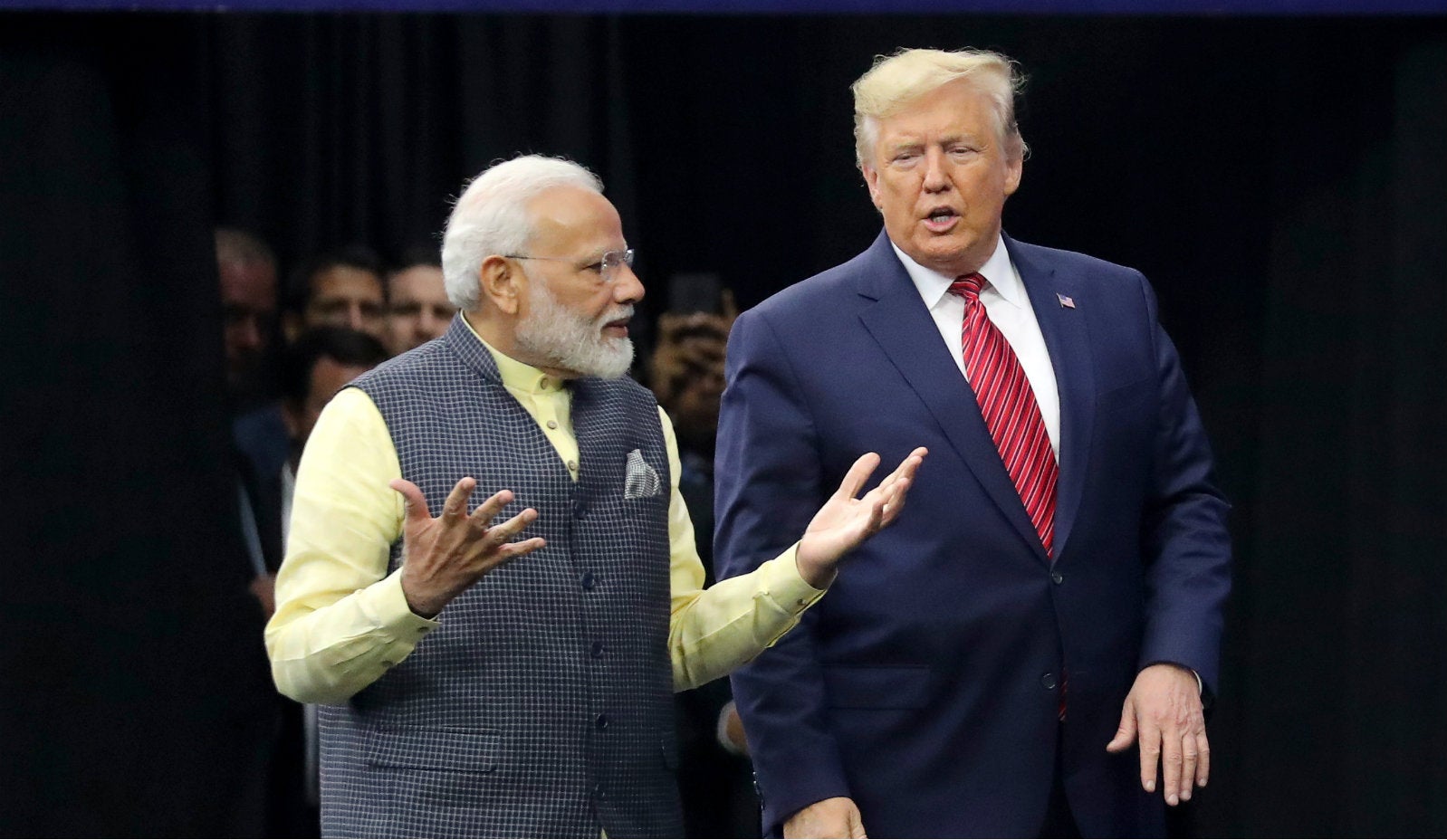A limited Indo-US trade deal is the best we can expect during the Trump visit
Donald Trump’s arrival in India today marks the fifth US presidential visit to India in the last 20 years. The increasing frequency of such state visits—only four US presidents visited India between 1947 and 1999—reflects the better strategic relations between New Delhi and Washington in recent times.


Donald Trump’s arrival in India today marks the fifth US presidential visit to India in the last 20 years. The increasing frequency of such state visits—only four US presidents visited India between 1947 and 1999—reflects the better strategic relations between New Delhi and Washington in recent times.
While there is a lot of focus on further cementing trade ties between the two nations, Trump’s visit has political hues as well. This being an election year in the US, Trump is likely to pursue his “America First” policy in full earnest to strike the right chord with his voter base.
The Trump administration officially targets a reduction in the US’ overall trade deficit, and there is pressure on trading partners, such as India, to reduce tariffs on US goods and services. In 2018-19, India had a trade surplus of $16.85 billion with the US.
Under these circumstances, a comprehensive India-US trade deal is unlikely.
Tariff king
Trump had called India “a tariff king” early last year and wants the Asian nation to grant free market access to more US products. His administration wants India to reduce tariffs on products like Harley Davidson bikes, and pulses and also remove restrictions on the import of US farm produce and high-end medical devices.
Some of these demands, are not in the Modi government’s interest and it is unlikely to cede much ground. For instance, free import of US dairy items will wreck the livelihoods of millions of Indian farmers. The unrestricted flow of foreign goods was one of the reasons India cited while walking out of the proposed Regional Comprehensive Economic Partnership in November last year.
India’s demands, on the other hand, concern the restoration of the Generalised System of Preference (GSP) benefits, which the US withdrew last year. GPS is a preferential US tariff programme that allows duty-free entry of thousands of products from designated countries.
Another demand from India is the reduction in tariffs on derivative steel and aluminium, which took effect this month.
Common ground
Despite the conflicting interests, there is also a case for both nations to seal some sort of a pact.
Trump’s visit is important for him given how crucial the Indian diaspora is for the US presidential elections in November this year. As for India, a trade deal with the US is important as exports hold the key to reviving its slump-hit economy. The US is India’s second largest export market after the European Union and third largest source of imports.
A deal always involves compromises and some give and take.
India is likely to agree to higher imports of US oil and natural gas to reduce the trade gap, and the US is unlikely to press hard on market access to dairy products. Therefore, a limited trade pact with the declaration of a comprehensive deal later is the likely outcome of the visit.
We welcome your comments at [email protected].